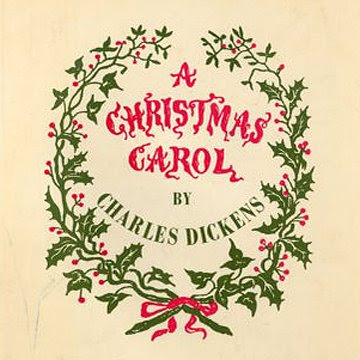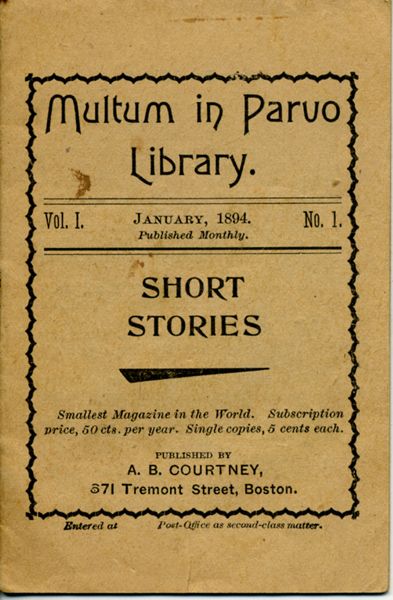 Because I was an avid reader in elementary school, my fifth grade teacher Mr. Potteroff suggested I read a book called A Christmas Carol by Charles Dickens. The school was having a book fair, and the book was among those being offered, so I bought it and I read it, and I fell in love with not only the story, but the power of the narrative.
Because I was an avid reader in elementary school, my fifth grade teacher Mr. Potteroff suggested I read a book called A Christmas Carol by Charles Dickens. The school was having a book fair, and the book was among those being offered, so I bought it and I read it, and I fell in love with not only the story, but the power of the narrative.A Christmas Carol was one of the first books that introduced me to the world of "grown up" literature. Unlike the chapter books I had been reading that were of the same length, A Christmas Carol was actually something Mr. Potteroff called a "novella".
I knew then I wanted to be a writer.
I've read hundreds of books since then. They have ranged from 1,500 page tomes to Ayn Rand's under 100 pages Anthem and every length in between.
I've read Lord of the Rings four different times: as a teen; while on three-month cruise while serving in the US Navy; the summer I turned 30-years-old; and, more recently, two summers ago for my 55th birthday.
During this last reading, I found myself growing impatient with the story--not with the quality of the writing, the richness of the characters and the world, the depth of the themes, and the multitude of enduring heroic tales--but with the length of the story itself.
LotR is often described erroneously as a trilogy and printed in three different volumes. That’s the way I read it the first time 40 years ago. The last three times, I read it as Tolkien intended: as one long novel.
The same is true of The Hunger Games: It's actually one large novel published in three distinct volumes.
On the other hand, the Harry Potter Saga is seven different novels, each written following the same plot template.
The problem I have with such long story arcs is the invested time required to get through each tale from page 1 to page 1,000 (LotR) or page1 all the way through to page 42,000 (Harry Potter).
In recent years, I have found myself tending towards shorter novels--especially what I call the Novel Gnome.
Who doesn't like cute little Gnomes?
(Although, even cute little Gnomes can be dangerous, as Chuck Sambuchino points out in his How to Survive a Garden Gnome Attack: Defend Yourself When the Lawn Warriors Strike (And They Will).)
You probably know the Novel Gnome as the Novella.
I find myself not only reading more novelle in recent months but also writing in the novella format as well.
 When I was younger, I wanted to be the next Edgar A. Poe and Ray Bradbury, to be known as a great short story writer. Then I grew up, and the short story market dried up
When I was younger, I wanted to be the next Edgar A. Poe and Ray Bradbury, to be known as a great short story writer. Then I grew up, and the short story market dried upA good writer cannot make a living as a short story writer as he did in the days of old.
As I work through my present novel NEVЯLAND, I’ve made a fantastic discovery: NEVЯLAND is nine novelle, each novella separate, complete, and distinct, the combination of each creating a unified whole.
So what do I like about the novella--both reading and writing?
The novella appeals to a deep brevity, just as the ingredients for a good quick meal that is delicious and healthy, like Ginger Chicken Curry Fajitas ala Liz.
Larry Mike’s Ginger Curry Chicken Fajita ala Liz
1 teaspoon pure chili powder
1 teaspoon kosher salt
1/2 teaspoon of the following:
ground cumin
ginger
curry powder
cayenne
thyme
sage
rosemary
onion powder
1/4 tsp garlic powder1 tbsp cornstarch
1/4 cup water
3 tbsp extra-virgin olive oil
1 whole skinless, boneless chicken breast (about 1 pound), cut into 1/2-inch strips
1 green bell pepper—cored, seeded and cut into thin strips
to make it quite colorful and a more interesting taste, use strips of orange bell and red bell pepper with the green bell pepper
1 medium onion, thinly sliced2 tablespoons fresh lime juice, plus lime wedges for serving
8 flour tortillas, warmed in the microwave
Shredded lettuce, shredded cheddar cheese, salsa and sour cream, for serving
 --In a resealable plastic bag, combine the chili powder with the salt, cumin, ginger, curry, cayenne, thyme, sage, rosemary, onion powder, garlic powder, cornstarch, water and 2 tablespoons of the oil.
--In a resealable plastic bag, combine the chili powder with the salt, cumin, ginger, curry, cayenne, thyme, sage, rosemary, onion powder, garlic powder, cornstarch, water and 2 tablespoons of the oil.--Add the chicken, bell pepper and onion, seal and knead gently to coat.
--Refrigerate for 15 minutes.
--Heat the remaining 1 tablespoon of oil in a large nonstick skillet until shimmering.
--Empty the contents of the bag into the skillet and cook over high heat, stirring occasionally, until the vegetables are crisp-tender and the chicken is cooked through, about 6 minutes.
--Remove from the heat and stir in the lime juice.
--Transfer the chicken and vegetables to a large bowl and serve with the warmed tortillas, lettuce, cheese, salsa, sour cream and lime wedges.
What I like to do is put a helping of the GingerChicken Curry in a tortilla, fold, and then place in an oven to broil for 15 to 20 minutes.
So, what does the novella offer for the writer and for the reader?
Only the best of both the short story and the novel worlds, that's what.
The only job of any writer is to entertain, whether writing a short story, a novella, or a novel.
Essentially, length is unimportant. A great novel of 1,000 exciting pages is a quicker read than a short story of ten boring pages.
 In a well-crafted story, the perks for the reader is a tale that is factually, mentally, and emotionally rewarding. A well-stocked tale helps the reader to understand the life around him and how to live with himself--no matter the length of the story.
In a well-crafted story, the perks for the reader is a tale that is factually, mentally, and emotionally rewarding. A well-stocked tale helps the reader to understand the life around him and how to live with himself--no matter the length of the story.However, finding good short stories is hard and, sometimes, a reader doesn't want to invest dozens of hours, days, or weeks required to read the thousands of pages of a ten-novel series that is populated with dozens and dozens of characters, vast amounts of scenery, and subplots that multiply like rabbits every five pages.
The novella combines the unity, the impact, and the economy of the short story with the broader scope, large cast of characters, and more extended time of the novel.
 Other advantages for the reader (as well as for the writer) of the novella are as follows:
Other advantages for the reader (as well as for the writer) of the novella are as follows:--read in one sitting
--strong single center of interest
--often a single strong character without the distraction of a half-dozen other characters vying for attention
--very limited number of sub-characters in close connection with each other
--more range of action than in a short story but not as exhausting as the novel
--broader expanse of settings than a short story but doesn’t require the reader to have a Google Maps memory of the imagined world
--pace is not urgent as in a short story but more immediate than in a 350-page novel
--the situation is seen as a whole, one solid movement from beginning to end
--state of being in some detail and depth but not overwhelming
--provides for a variety in style and shading without getting lost
--not just an incident or an episode
--doesn't require an extensive knowledge of the history and composition of the imagined world setting (Harry Potter; Lord of the Rings; Game of Thrones)
Of course, many readers want all the depth and history of 1,000 page novels and novel series that number into the 10,000 page realm.
What I like about the novella is that the novella combines in a manageable length the virtues of the compactness of the short story and the complexity of the novel.
 The narrated time of the novella serves as a window to illuminate a remoter past and to reveal something of a foreseeable future, and all in one reader's sitting. I can begin a novella after supper and be finished by bedtime.
The narrated time of the novella serves as a window to illuminate a remoter past and to reveal something of a foreseeable future, and all in one reader's sitting. I can begin a novella after supper and be finished by bedtime.The novella is Multim in Parvo at its finest.
While working on NEVЯLAND, I’ve discovered that dividing the trilogy into nine distinct and unique novelle has tightened up the story and created a tale that is exciting and rewarding--for the characters, for me, and, more importantly, for the hurried reader.
Bon Appetit.
Write Well.
Larry Mike
No comments:
Post a Comment